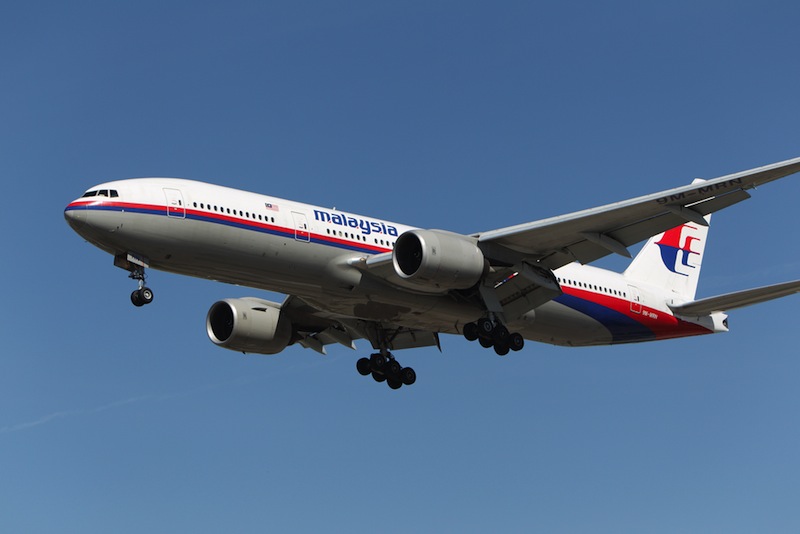
The mystery surrounding a missing commercial airliner raises a fundamental question: How can a big jet full of people just vanish into thin air in this day and age?
Malaysia Airlines Flight 370 took off from the Malaysian capital of Kuala Lumpur on Friday afternoon (March 7) U.S. Eastern time, headed for Beijing. But air traffic controllers lost contact with the plane less than an hour later as it was flying over the Gulf of Thailand — it just disappeared from the radar. The whereabouts of the Boeing 777 jet, which was carrying 227 passengers and 12 crew members, remain unknown.
"This is a very unusual event," Sid McGuirk, an associate professor of air traffic management at Embry-Riddle Aeronautical University in Florida, told Live Science. "It's highly unusual for an aircraft at altitude — which, at least according to the press, this aircraft was — to drop off the radar." [The 5 Real Hazards of Air Travel]
Two radar systems
Air traffic controllers track commercial jets using two types of radar. "Primary" radar determines a plane's position by analyzing signals that bounce back off the aircraft; the "secondary" or "enhanced" type requests information from each plane, which is then sent by a piece of equipment aboard a jet known as a transponder.
Radar facilities are based on land, and each one has a range of about 200 miles (320 kilometers), McGuirk said. So passenger jets on transoceanic flights do go off the radar map for a period of time — but that doesn't mean nobody's keeping tabs on them.
"The flight crews use combinations of high-frequency (HF) radio, satellite-based voice communication and text-data networks to report to ATC [air traffic control] the exact time, position and flight level when the crossing begins," said Emily McGee of the Flight Safety Foundation, a nonprofit organization headquartered in Alexandria, Va.
Sign up for the Live Science daily newsletter now
Get the world’s most fascinating discoveries delivered straight to your inbox.
"They then update ATC with voice or text progress reports at defined geographic locations and time intervals," McGee told Live Science via email. "Airlines file flight plans, and airplanes are expected to arrive at certain points by certain times. When an airplane crew fails to check in at its next checkpoint, that is when an alarm is raised. This case is an extremely rare event, especially with the highly technologically advanced aircraft in the air today."
Commercial jets can also fall off the map briefly when they fly at low altitudes because radar relies on line-of-sight contact. Mountains and other landforms can block the signals going to and from the closest radar stations, as can the curvature of the Earth.
As a result, low-flying jets can be tough to track continuously, especially if their transponders are disabled — a fact that terrorists took advantage of on 9/11. [9/11 Science: 10 Ways Terrorist Attacks Rocked America]
"The first thing that many of the hijackers did [on 9/11] was turn off the transponder," McGuirk said. "Once they turned off the transponders, then they turned the aircraft back toward whatever their target was."
Someone who wanted to steal the Malaysia Airlines jet could theoretically shut off the transponder and dip down to an altitude of 5,000 feet (about 1,520 meters) or so, he added, while cautioning how far-fetched that scenario is.
"Of course, it's kind of hard to hide a 777," McGuirk said. "Wherever it lands, somebody's going to say, 'Hey! There's a Malaysia Air 777. It didn't crash at all — it was being stolen.'"
Another vanished jet
McGuirk likened the disappearance of MH370 to that of Air France Flight 447, which vanished over the Atlantic Ocean in June 2009 after departing Rio de Janeiro en route to Paris.
Flight 447 went down in bad weather, claiming the lives of all 228 people aboard. It took five days to locate the wreckage and nearly two years to locate and recover the Airbus A330's "black boxes" from the ocean floor.
In some ways, however, the loss of MH370 is even more puzzling. Flight 447 was well offshore, beyond the range of radar stations. But the Malaysia Airlines plane was apparently not far from land, McGuirk said, adding that one Malaysian Air Force official made comments to the media suggesting the aircraft was being tracked by radar just before it went missing.
The comparison to Air France Flight 447 is not encouraging to the friends and families of those aboard MH370, who have already been told by Malaysian officials to expect the worst.
Aviation experts have speculated that the plane's transponder stopped working. This could have happened because the instrument was turned off intentionally or suffered a failure of some sort. Or the jet may have fallen apart, or been blown apart, in the air.
New tracking system coming
While aircraft-tracking systems are constantly being upgraded, a big change is in the offing, say officials with the U.S. Federal Aviation Administration.
The FAA is working to transition from ground-based radar tracking to a system called NextGen that relies heavily on satellites.
"Satellite navigation will let pilots know the precise locations of other airplanes around them. That allows more planes in the sky while enhancing the safety of travel," officials wrote about NextGen on the FAA website. "Satellite landing procedures will let pilots arrive at airports more predictably and more efficiently. And once on the ground, satellite monitoring of airplanes leads to getting you to the gate faster."
NextGen should also enable savings of hundreds of dollars per flight by 2018, FAA officials added.
Follow Mike Wall on Twitter @michaeldwall and Google+. Follow us @livescience, Facebook & Google+. Original article on Live Science.











